Before starting to write this piece I read Tripadvisor questions on where to stay in Rome as a first-time visitor. The link is an overview of neighborhoods in central Rome for hotels.
My main concern when booking Rome is I wanted to be in the city center with easy access to public transportation and airport trains. That is why I picked a hotel in the Termini Station area of central Rome.
I have walked and taken Metro around London and Paris trying to see the main sights. Those cities are immense. I felt Rome was relatively compact to walk around with numerous sights to easily fill a day in a 3-mile walk.
On a Sunday morning I crossed the city by Metro from Termini Station to Vatican City to see the Pope and then walked for hours about 4 or 5 miles back to our hotel while seeing the Tiber River, Pantheon, Altare della Patria, Markets of Trajan, Roman Forum ruins and the Colosseum.
Loyalty Traveler -Â Rome is a walkable city for sights (July 10, 2018).
On a late-June Monday, I wanted to check out Villa Borghese Gardens. The walk described in this post covers Villa Borghese Park and the ancient city wall.
My final Rome Walks article will cover the upscale hotel district and U.S. Embassy along Via Vittorio Veneto, The Spanish Steps and Trevi Fountain.
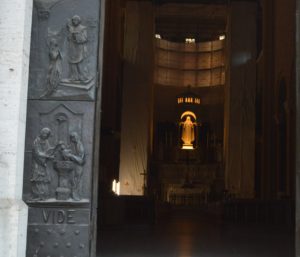
I walked out of my hotel neighborhood at Best Western Artdeco Hotel near Castro Pretorio Metro and Termini Station. Traffic noise on Corso d’Italia was too much for my ears. This road was turned into a high-speed route through Rome in 1960 and getting across and away from Corso d’Italia was my main objective once I found myself walking beside the road to the park.
The most interesting part of the five minutes or so I walked along Corso d’Italia was the large wall across the street, which turns out to be the 3rd/4th century Aurelian Walls.
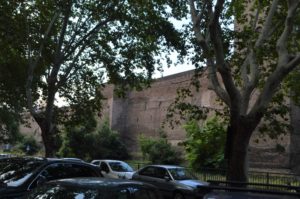
Northern Italy was attacked by Germanic tribes in 270 with Roman military defeats. Emperor Aurelian (270-275) launched an ambitious project to build new defensive walls around Rome. The Aurelian Walls encircled ancient Rome with 19km/12miles of brick and concrete walls 11 ft thick and 26 ft. high with towers and gates. The walls were heightened in the 4th century.
Aurelian is credited with re-strengthening the Roman Empire to help it carry on for another two centuries.
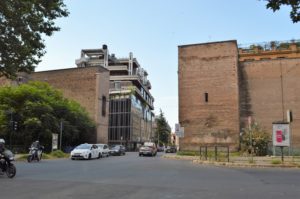
On a Monday morning work life seemed to be back in order with most pedestrians on the street looking finely dressed for office work in an upscale neighborhood of the Pinciano quarter.
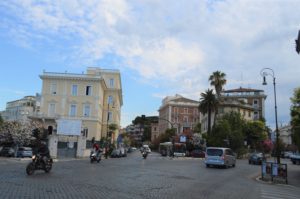
Villa Borghese Gardens
I gravitate to green spaces in any major city. Villa Borghese gardens at nearly 200 acres is the 3rd largest public park in Rome and the largest green space in the tourist center of Rome. As a comparison, New York Central Park is 843 acres and San Francisco Golden Gate Park is 1,017 acres.
Villa Borghese Park is a green oasis to escape the crowds of Rome, especially on a Monday morning.
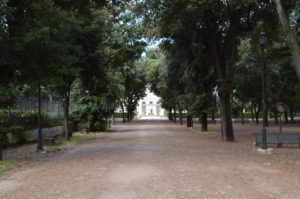
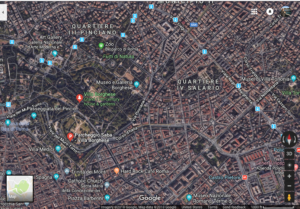
According to Wikipedia: In 1605, Cardinal Scipione Borghese, nephew of Pope Paul V, turned his vineyards into gardens. In the 19th century the gardens were fashioned into an English landscape garden style.
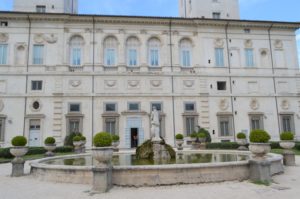
As is often the case when I travel, I had no idea at the time that this building is actually the Villa Borghesi and now houses the world-class Galleria Borghese art museum. The museum is noted for its collection of Caravaggio paintings and Bernini sculptures.
I approached the villa from the back side and never saw the front of the villa with the museum entrance. Turns out the museum is closed on Monday anyway.
Rather than tourists, all I saw in the villa gardens outside the museum were women walking their dogs and joggers running through the garden.
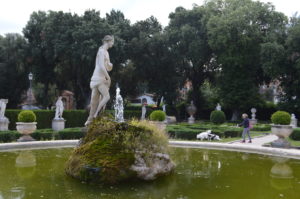
I was surprised to see so many statues around the villa in a public park. Then I noticed a sign at the base of this Bernini replica of Autumn in the Guise of Priapus (1616-17). The original is in the Metropolitan Museum of Art New York.
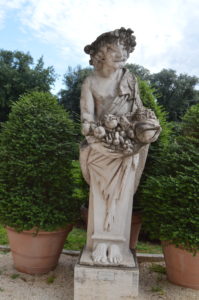
Valley of the Plane Trees
A sign in Italian and English described one area of the park as the Valley of the Plane Trees, created as a hunting ground for Cardinal Scipione Borghese around 1618. There were 40 plane trees planted around a pool of water. The area was landscaped again in the 19th century removing all traces of the pool. The sign stated 10 of the original plane trees are still seen in the valley.
I looked around and snapped a photo of the largest trees I saw. These might be 400-year old plane trees. Or not.
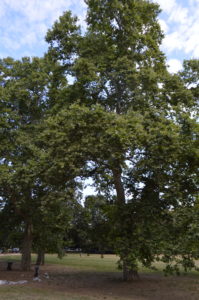
My wife and I usually wander around Golden Gate Park San Francisco when we visit the city. Commonly we find campsites in the woods. No different from Villa Borghese Park.


Looking like I was reaching the far side of Villa Borghese Park at the National Gallery of Modern Art, I turned back to the park interior. “Time is out of joint” is a message that resonates with me these days.
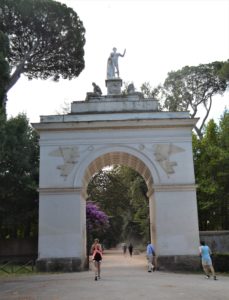
I spotted a statue of Alexander Pushkin. I enjoyed reading Russian classics when I was a teenager. Pushkin wrote a story that always stuck with me about a poet renowned for his ability to create extemporaneous poems on whatever topic an audience member suggested. Kind of like the early 19th century version of a poetry slam.
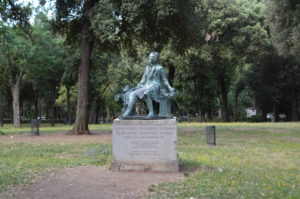
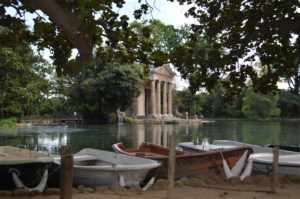

While I could have spent hours walking around Villa Borghese Park, Kelley had asked me to wake her up at 8:30am and that time had already passed.
Turned out I was able to walk back to Best Western Artdeco Hotel in about 20 minutes from Villa Borghese Park heading down Via Vittorio Veneto past some major chain hotels like Rome Marriott Grand Flora and Westin Excelsior and the U.S. Embassy.
Those sites, along with photos of the Spanish Steps and Trevi Fountain will be my final Rome Walks trip report.


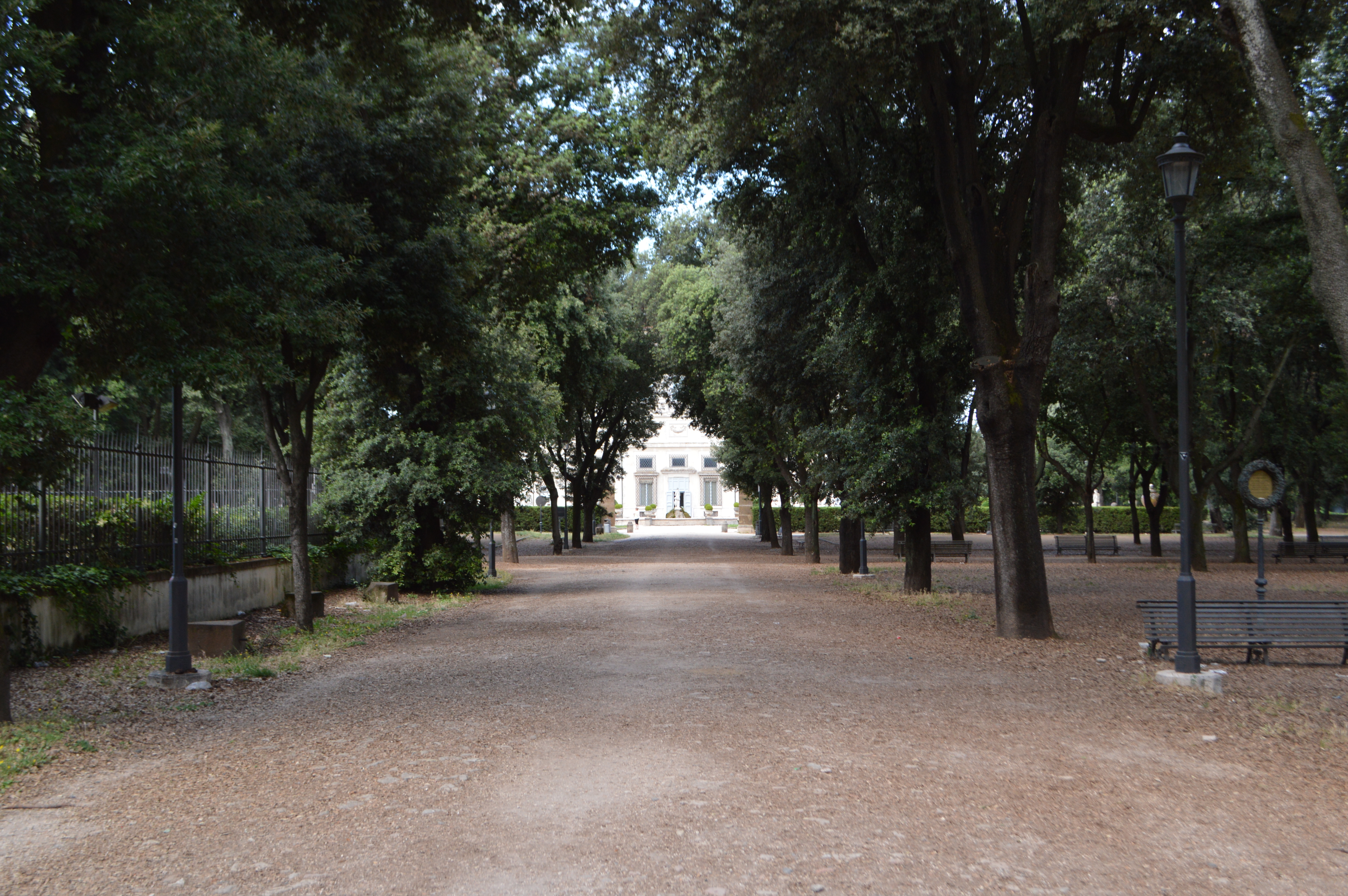
2 Comments
Comments are closed.